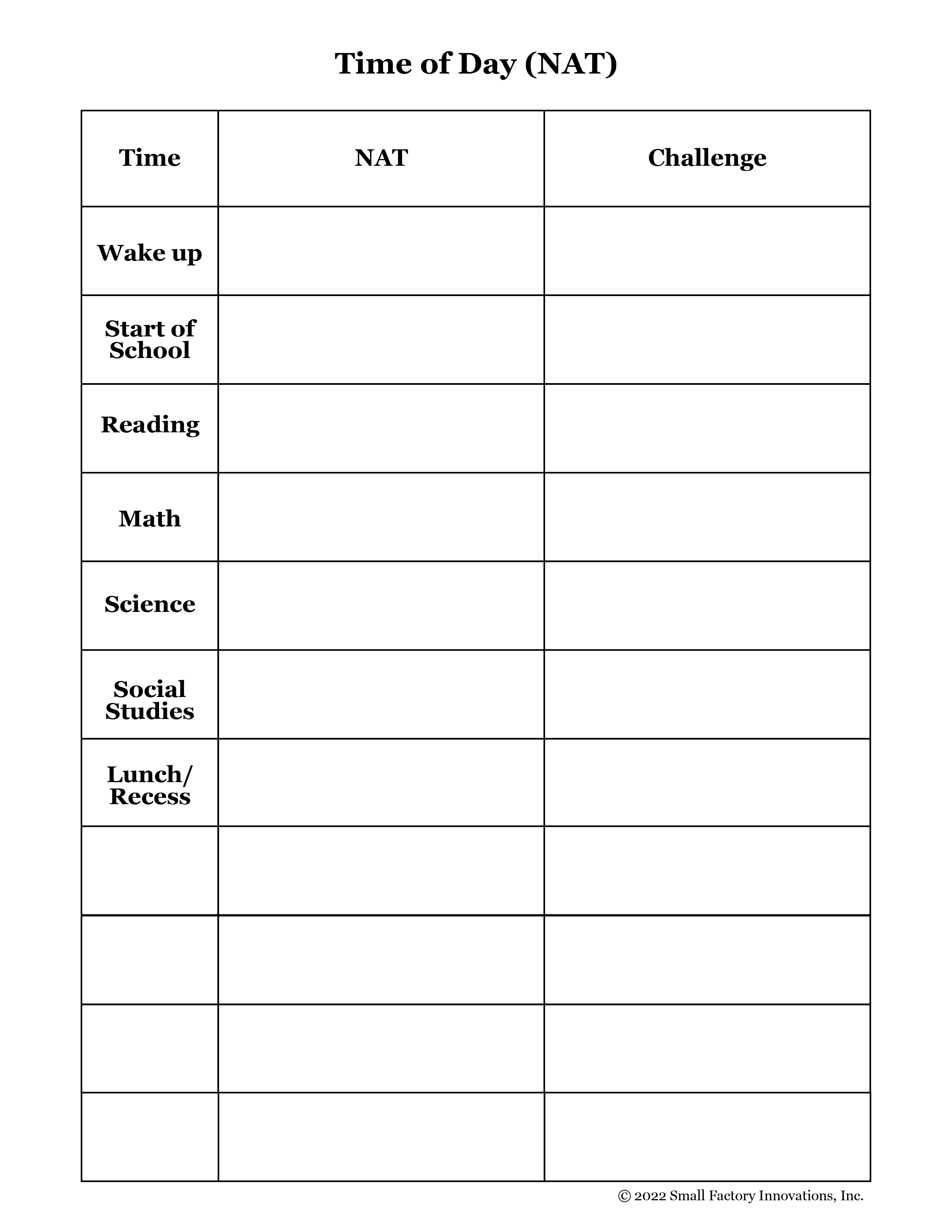
Improve life outcomes
Jumpstart: Addressing Negative Thoughts - Universal
Foundational
CASEL Competency Focus: Self Awareness
Time: 30-40 minutes
Materials: Chart, Paper, Journal or NoteBook, Poster Paper, Worksheet: Time of the day, Balloons.
Objectives:
1. Develop student awareness of how their thinking impacts their daily functioning.
2. Recognize how negative thoughts can impede their success at school.
3. Develop skills to challenge negative thoughts as they progress through the school day.
Definitions of Key Terms:
- Thoughts: What you produce while thinking.
- Showing Respect: Showing care, concern and kindness for others; often listening and following directions.
- Negative Automatic Thoughts (NAT): Negative thoughts that “pop” into your mind as you face problems.
- Schemas: Patterns or clusters of thoughts.
- Challenge: Arguing against an idea that is not realistic. For example, challenging a negative thought.
Lesson Procedures
Introduction: There are many thoughts that go through our minds as we progress through our day. Throughout the day, we are always thinking about what is happening in our surroundings. When we wake up in the morning the first thought that often comes to mind is “I am so so tired, I do not want to get out of bed!”. Many of these thoughts “pop” into our minds as we go through our school day. Often when working through a school day these “pop up” thoughts are negative. A student can have a quiz and even though they know the material, a negative thought might “pop” into mind that says “I am going to fail” or “Mrs. Johnson will not like me if I do not do well”. Or you could walk into the lunchroom and think “ I will have no one to talk to” even though you have friends. These thoughts are called Negative Automatic Thoughts” (NAT). They are negative thoughts that come up during the day as we deal with problems that are both big and small. Often these negative thoughts develop into patterns of negative thoughts called “schemas”. The good news is that we can challenge these negative thoughts. We make a choice to listen to these negative thoughts or we can challenge them. For example, when you think “I am going to fail” you can think “I am ok, I studied and I can talk to the teacher if I do not do well” or if there is no one to talk to at lunch you can think “I can always read a book if my friend is not in today”. With practice, you can overcome difficult thoughts and have more success.
Practice:
Students may feel overwhelmed by the negative thoughts that they face during the school day. Often the students will not understand that these negative automatic thoughts can be challenged. Have the student create a timesheet starting with “wake up” and then list the periods of the school day as well as activities at home and bedtime. Discuss with the students, what are the negative automatic thoughts that “pop” up during the day. Create a column NAT next to each time and have the students list a negative thought that might “pop” up. Make another column with the heading “challenges” have the students write a challenge to each of the negative thoughts. Discuss your findings with the class. You complete this activity as a teacher-directed lesson or have the students complete it on their own.
Game time:
Have the students throw a ball into a basket across the room. Before they throw the ball ask them if they have any thoughts that may prevent them from making the shot. Encourage other students to make positive statements to help the student look at the game as “fun”.
Poster or Balloon Activity:
Students will draw a balloon and then the students write a negative thought on the balloon. Students can then draw an item “popping” the balloon that has challenges to that thought. You can have the students blow up a balloon in class, write a negative automatic thought on it, and pop it outside while challenging the thought. Or fill the balloon with water and have them throw it back and forth each time challenging the statement.
Journal:
Have students make a journal of negative thoughts that they experience during the school day. Have them write how they challenged these negative thoughts and report back the next day.
